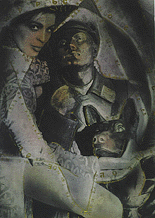Two Recent Hungarian Films
Tükrözõdések (Mirrorings) – Directed by Istvan Darday and Gyorgyi Szalai. 1998.
Presszo (Espresso) – Directed by Tamas Sas; written by Gabor Nemeth. 1998.
Tükrözõdések is an ambitious and complex experimental film by Istvan Darday and Gyorgyi Szalai. A dense pictorial compilation of the oblique memories and imageries from a dying scientist’s (Teo Fabricius) life. The scientist, suffering from the near fatal injuries of a car crash as well as an unidentified terminal Œailment’ incurred during his work in Chernobyl, has his life threatened by a doctor/Mafioso for some knowledge he possesses about the nuclear disaster. This bizarre film blurs the … Read more





